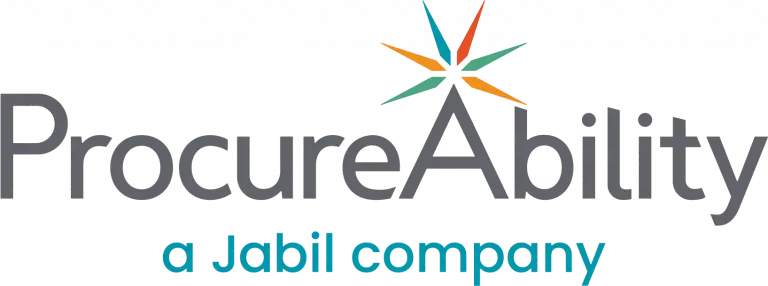Procurement Organizations of the Future:
A Human-Centered Approach to Data-Driven Decision-Making
Procurement organizations are navigating a dynamic and uncertain macroeconomic environment, with growing pressures to improve efficiency and agility. In this context, data-driven decision-making has become indispensable. A recent Gartner report reveals that while 75% of procurement leaders recognize data analytics as a key driver of strategic value, only 23% feel prepared to fully leverage its potential.1
The proliferation of data offers opportunities for deeper insights and more informed decisions. Digital transformation has emerged as a top priority for chief procurement officers, with technologies like artificial intelligence (AI), machine learning (ML), and predictive analytics revolutionizing procurement processes. These innovations automate routine tasks, refine strategies, and fundamentally reshape procurement operations.
Despite these advancements, the transition to data-driven decision-making requires a human-centered approach. Many stakeholders remain hesitant, favoring traditional methods over new technologies. Additionally, the increasing use of AI raises important ethical considerations, including bias mitigation, transparency, and accountability. As procurement evolves, organizations must strike a careful balance between embracing innovation and maintaining control.
This blog explores why procurement should harness data analytics, how to build trust in data-driven decisions, and how to responsibly leverage AI while placing people at the center of change.
The value of procurement data analytics
Data analytics enables procurement teams to treat data as a strategic asset that drives smarter decisions and measurable outcomes. Choices are no longer made based on intuition but on evidence.
Key areas where analytics deliver value include the following:
- Spend Analysis: Insights from spend data can uncover opportunities for cost savings and improved supplier performance. For example, a detailed spend analysis can identify inefficiencies, helping prioritize cost-reduction initiatives.
- Savings Targets: By analyzing historical and predictive data, procurement teams can set realistic savings goals and track progress. Predictive insights can reveal hidden cost-savings opportunities.
- Supplier Relationships: Data enables organizations to evaluate supplier performance, optimize contracts, and foster innovation. Supplier scorecards, for instance, mitigate risks and enhance collaboration, while performance metrics and spend trends improve outcomes.
What’s more, thoughtfully leveraging data can help procurement grow its reputation within an organization. Procurement decisions become more valuable when they align with broader organizational goals, such as reducing costs, mitigating supplier risks, and guiding market positioning. The ability to demonstrate measurable impact fosters executive confidence in procurement’s value.
Finding the right data and tools
Harnessing data-driven decision-making begins with leveraging the right data sources and tools. There are two types of data to consider:
- Internal data: Includes spend analytics, historical purchasing trends, supplier performance metrics, and contract compliance data
- External data: Includes market intelligence, price benchmarking, industry trends, and competitor benchmarking
Emerging technologies also contribute valuable internal and external data. For example, Internet of Things (IoT) sensors provide real-time inventory tracking, blockchain ensures supply chain transparency, and sustainability management software tracks environmental impacts. Together, data sources such as these provide a 360-degree view of procurement activities.
An increasing number of tools enable data-driven procurement:
- Spend-analysis software: Identifies cost-savings opportunities and tracks spending patterns
- Predictive analytics tools: Forecasts demand, prices, and supplier risks for strategic planning
- Supplier relationship management (SRM) platforms: Centralizes supplier data for performance tracking, risk management, and collaboration
By integrating these tools, procurement teams transform complex data into actionable insights, improving strategic decisions and organizational impact.
Sharing the value: Building trust to fuel data-driven decisions
Embedding data-driven decision-making requires building trust with stakeholders and addressing skepticism. Why should they change their methods? Why should they share their data? A transparent and collaborative approach is essential for success. Here are some important steps to consider:
- Share your goals: Explain what you’re trying to uncover, what data you need, and how the data will improve outcomes.
- Ensure transparency: Implement clear documentation and explain-ability for AI processes to make algorithmic decisions understandable to all stakeholders.
- Involve stakeholders’ perspectives: Understand their challenges, goals, and expenses, and incorporate their insights into your analytics. For instance, partnering with stakeholders to validate baselines ensures alignment and shared ownership of outcomes.
- Mitigate biases: Procurement teams must ensure that algorithms are trained on diverse, high-quality data to reduce the risk of biased outcomes.
- Clearly present outcomes: Present insights in stakeholder-friendly terms to make the data accessible and actionable.
- Foster collaboration: Promote open dialogues to validate findings and share insights. Regular meetings to review spend analyses can uncover new opportunities and reinforce data-driven practices.
- Maintain accountability: Establish a governance framework to oversee ethical AI use.
When stakeholders see the tangible value of data-driven strategies, they are more invested in collecting, sharing, and analyzing data. This collaborative approach aligns goals and ensures better outcomes for all. By combining AI innovation with ethical considerations, procurement organizations can enhance decision-making, build trust, and drive responsible adoption.
Looking ahead
The future of procurement is data-driven yet inherently human-centered. Data analytics and AI hold the key to unlocking efficiencies, enhancing decision-making, and driving organizational improvements. To realize this potential, procurement teams must:
- Leverage third-party providers and tools for technology, expertise, and capacity to optimize decision-making.
- Transform stakeholder skepticism into collaboration and trust.
- Build ethical AI practices that address bias, transparency, and accountability.
To stay ahead, procurement leaders must assess current data practices, explore emerging technologies, and embrace a human-centered approach to build the procurement organization of the future.
Source




